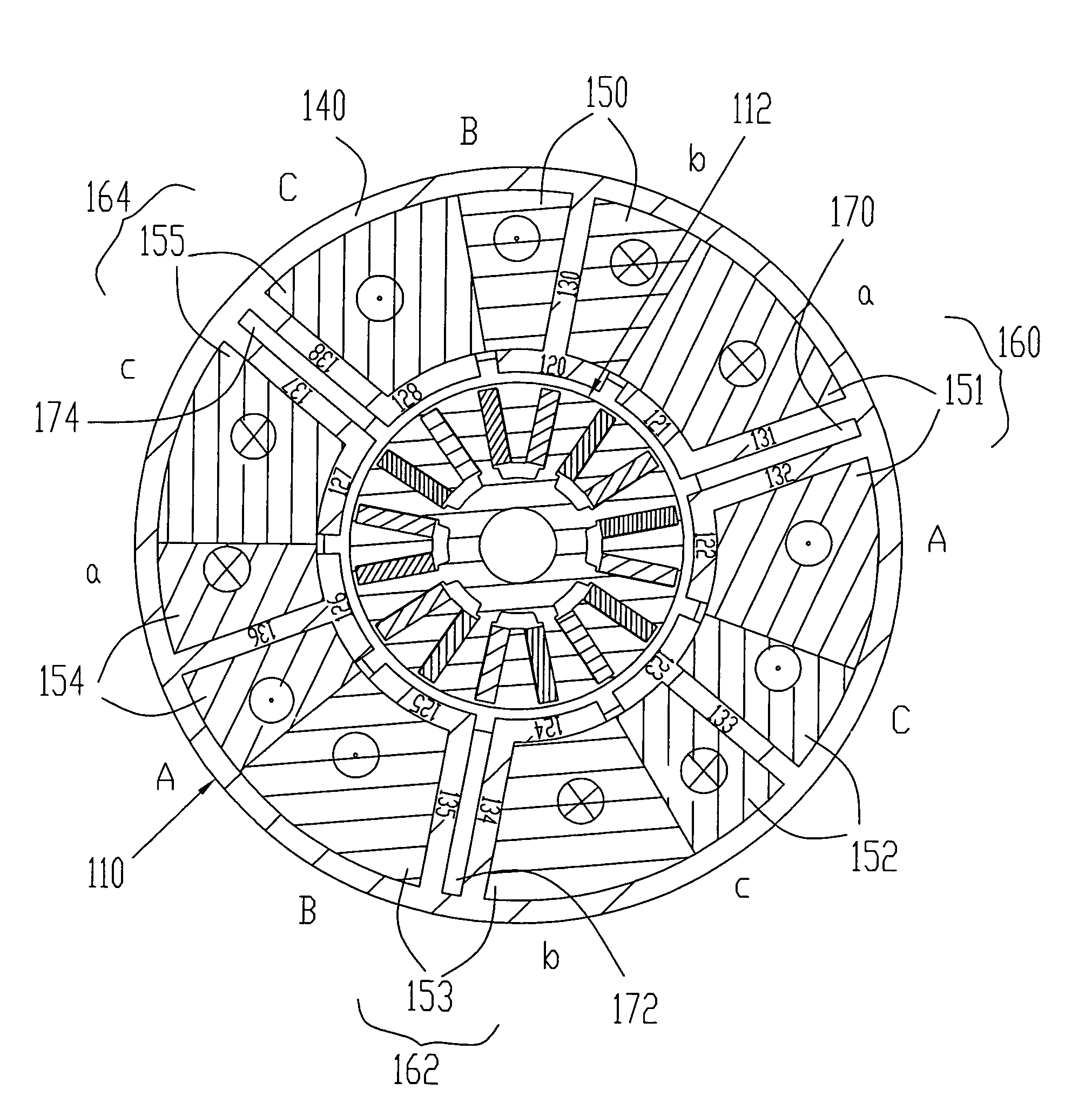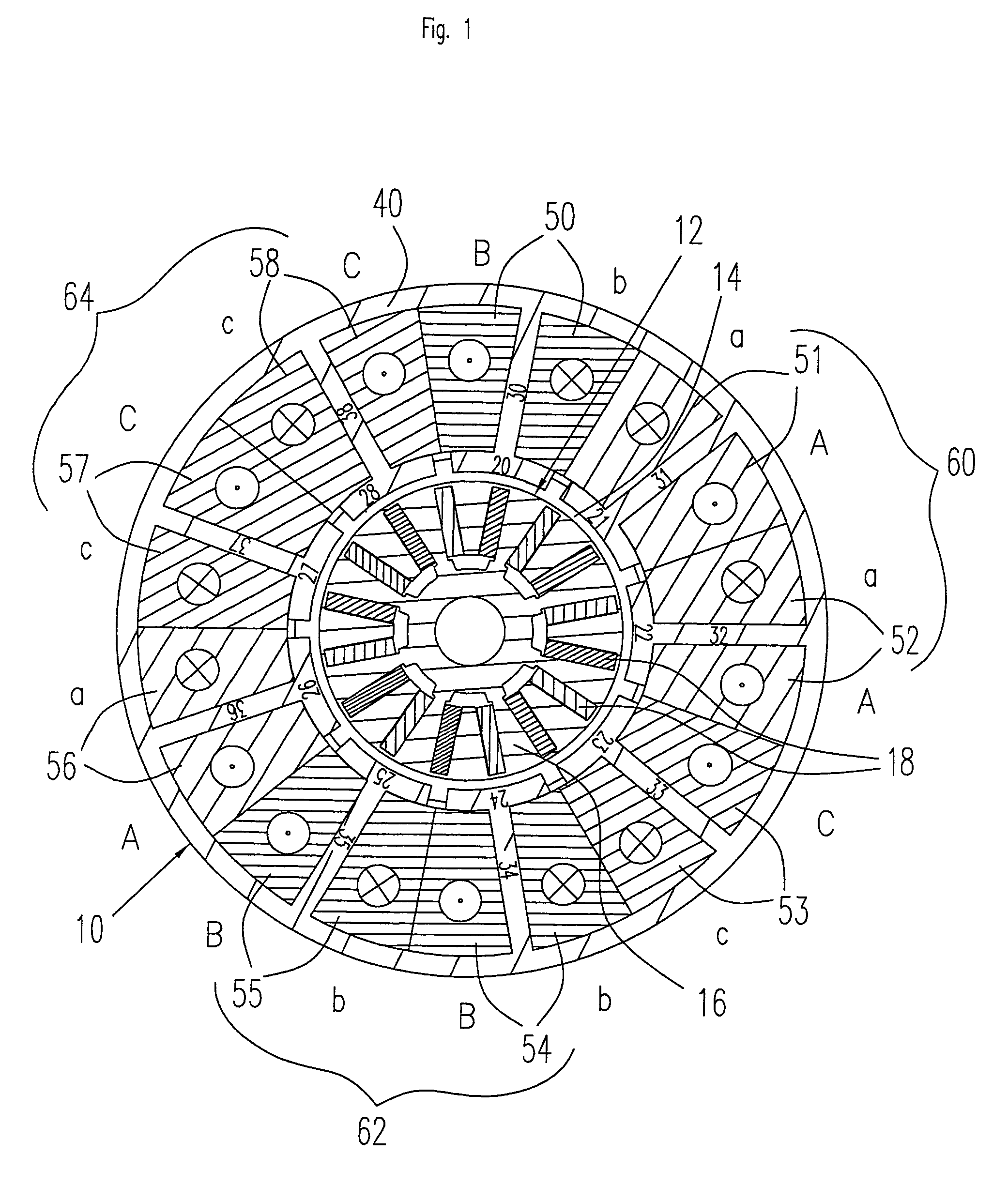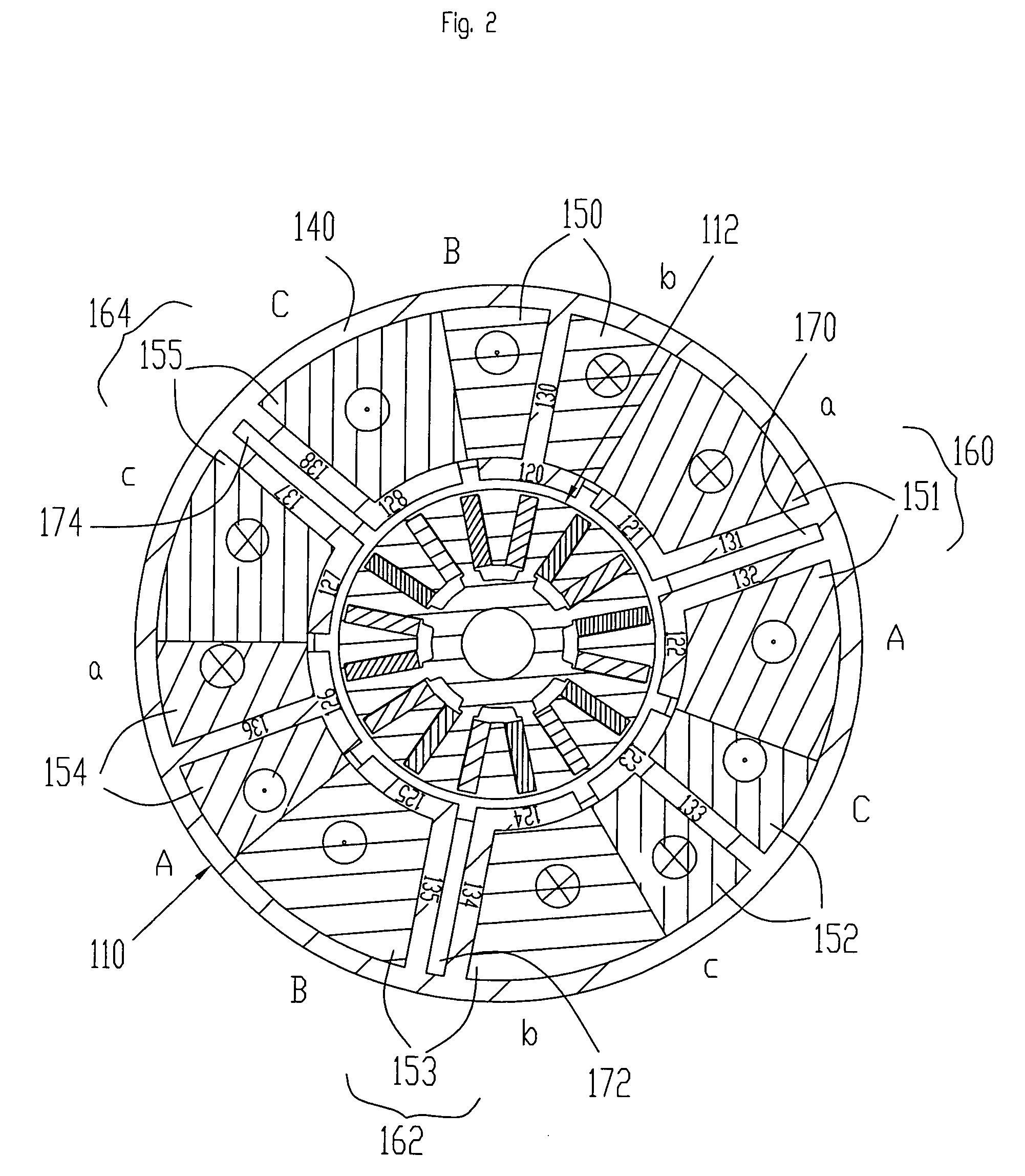Brushless direct current motor
a direct current motor and brushless technology, applied in the direction of rotating magnets, synchronous machines with stationary armatures, windings, etc., can solve the problems of low efficiency, ineffective utilization of winding space in these kinds of motors, and motors that need to have a comparatively large volume, so as to maximize the number of cogging cycles and achieve the same operating performance , the effect of low cogging torqu
- Summary
- Abstract
- Description
- Claims
- Application Information
AI Technical Summary
Benefits of technology
Problems solved by technology
Method used
Image
Examples
Embodiment Construction
[0018]FIG. 1 shows a motor according to the prior art having nine slots and 16 rotor poles in cross-section. The number of stator pole slots, i.e. the spaces between two adjoining stator poles, corresponds to the number of stator poles. The motor consists of a stator 10 at whose center a rotor 12 is concentrically disposed. The rotor 12 has a rotor core 16 and 16 permanent magnets 18 embedded spoke-like in pairs in the rotor core. The rotor 12 is separated from the stator 10 by an air gap 14. The stator 10 has nine (9) pole heads 20 to 28 disposed evenly around the circumference of the rotor. A stator pole slot is formed between each two adjoining stator poles. Each pole head 20–28 is carried by a radially arranged pole bridge 30–38, the pole bridges abutting the pole heads perpendicularly and being connected to the middle of the pole heads. At their radially outer ends, the pole bridges are connected to a back yoke ring (stator yoke) 40 of the stator 10. Each of the pole bridges 30...
PUM
 Login to View More
Login to View More Abstract
Description
Claims
Application Information
 Login to View More
Login to View More - R&D
- Intellectual Property
- Life Sciences
- Materials
- Tech Scout
- Unparalleled Data Quality
- Higher Quality Content
- 60% Fewer Hallucinations
Browse by: Latest US Patents, China's latest patents, Technical Efficacy Thesaurus, Application Domain, Technology Topic, Popular Technical Reports.
© 2025 PatSnap. All rights reserved.Legal|Privacy policy|Modern Slavery Act Transparency Statement|Sitemap|About US| Contact US: help@patsnap.com



